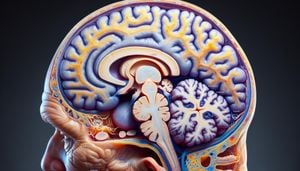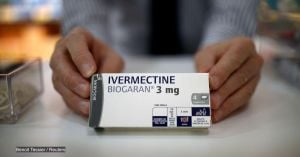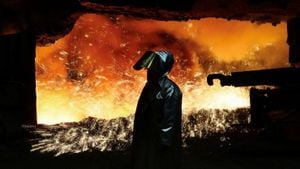Butch Wilmore and Suni Williams, two astronauts aboard the International Space Station (ISS), have found themselves more or less stuck since their Boeing Starliner capsule launched on June 5. Initially scheduled for just eight days, their mission has now extended indefinitely, with NASA workers scrambling to resolve technical issues for their trip back home.
The astronauts have bunked with seven others already on the ISS, making things quite cozy. With only six private sleeping quarters available, Wilmore has turned to using sleeping bags instead, often finding himself squeezed for space inside the Japanese Kibo module.
Initially, the duo faced the challenge of having limited clothing, as their wardrobe was only planned for the short stay. Fortunately, earlier this month, they received new supplies, including food and fresh clothes, delivered by an 8,200-pound resupply spacecraft.
While awaiting their uncertain return, the trio of astronauts have kept themselves busy with various tasks onboard. Wilmore and Williams have helped conduct experiments, including researching plant growth under microgravity and the production of fiber optic cables.
The pair has adapted remarkable ways to exercise and maintain their health during the extended mission. Recently, Williams completed the Falmouth Road Race from the treadmill of the ISS, showcasing her commitment to staying active, drawing praise from fans back home.
Those on Earth, such as students from Topeka, have taken the opportunity to engage with the astronauts through interviews, asking questions about what life is like aboard the ISS. The astronauts answered queries about activities, sleep arrangements, and scientific experiments, inspiring the children to dream big and explore their own career potentials.
Wilmore and Williams quickly realized their time was also valuable for contributing to experiments. Their support plays a significant role in helping researchers figure out things like how plants might be cultivated efficiently aboard future space missions to places like the Moon or Mars.
Through this period of adjustment, Wilmore is often reflecting on how different aspects of life transform when subjected to the constraints of space. Understanding the microgravity environment has prompted them to examine several processes, contributing to future missions and deepening their knowledge.
Meanwhile, NASA continues to explore the best options for bringing Wilmore and Williams back to Earth. While they finalize their approach, they remain engaged and lively contributors at the ISS.
Originally, the space station was only supposed to accommodate them for one week, and now their mission continues to expand. The astronauts’ involvement has proven invaluable not just for themselves, but for the future of space exploration.
Aside from their astronaut duties, connectivity with family and friends provides some comfort during this extended stay. They make use of video calls and emails to maintain ties with loved ones.
Creatively adapting, both astronauts continue to tackle daily challenges, providing insights to Earth across various experiments and learning initiatives. Their unpredictably prolonged mission has become both educational and exploratory for them, showcasing resilience amid the twists of space travel.
NASA's future plans remain focused on decommissioning the ISS, seeking alternative approaches for continuing scientific research. Meanwhile, up-and-coming companies work on developing new space stations to replace the legacy of the ISS, setting the stage for even more scientific endeavors.
The ISS has been instrumental over the years, paving the way for collaboration among international space agencies and scientists from diverse fields. With just over six years remaining until the planned retirement of the station, NASA is contemplating what to prioritize next.
Though the route home remains uncertain for Wilmore and Williams, their contributions cannot be measured only by their location. Instead, they are living embodiments of human exploration—pushing boundaries and taste-testing the potential of life beyond our planet.
With NASA committed to duplicated successes, the ISS reflects decades of advancements, and the astronauts’ current mission speaks volumes for the future of human presence beyond Earth and the advent of new scientific discoveries.



